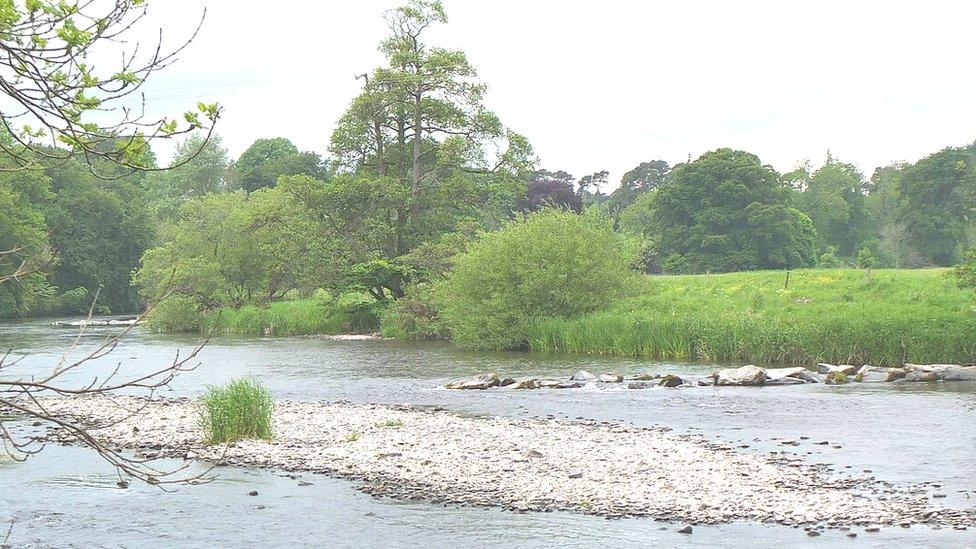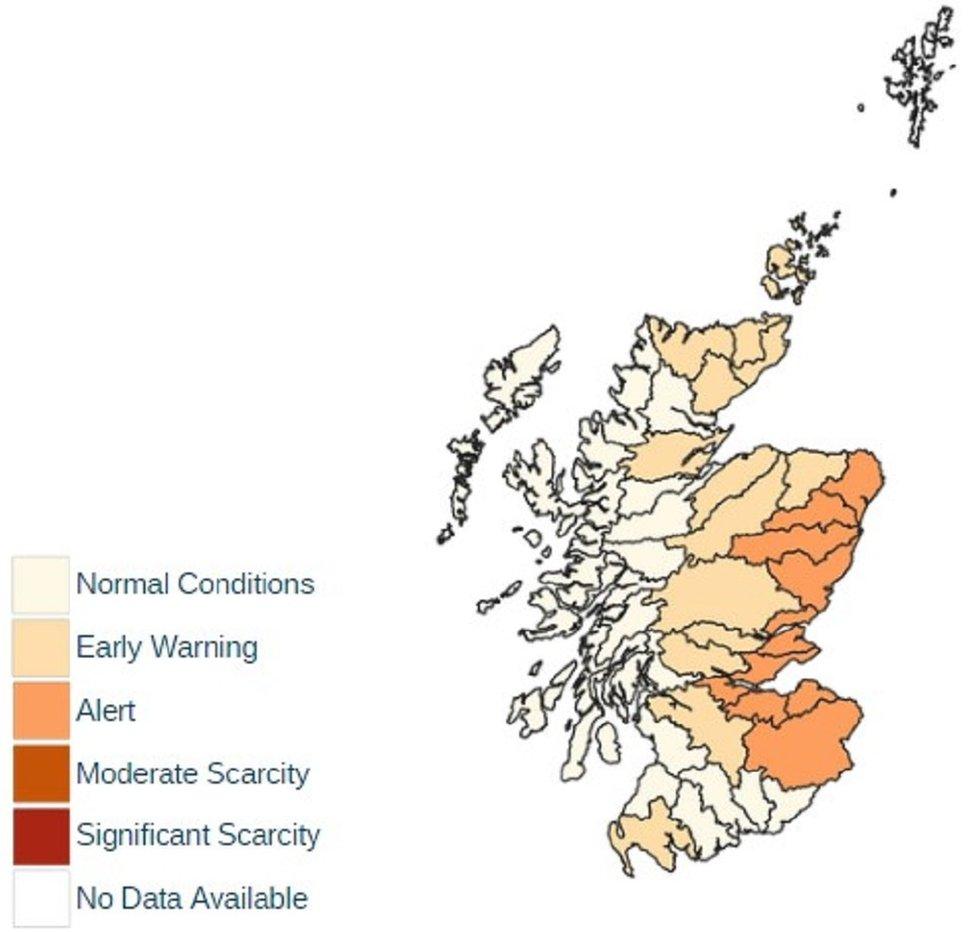East-west split in Scotland as water scarcity threat grows
- Published

The Borders - where low levels have been seen on the River Tweed - has been added to the areas at alert level
Environmental experts say an east-west split in water scarcity threat is continuing despite recent rainfall.
The Borders has joined parts of Aberdeenshire, Tayside, Fife and the Lothians in moving to alert level.
It means businesses that take water from the environment are being advised to do so more efficiently.
The Scottish Environment Protection Agency (Sepa) said any further dry spells could see other water users advised to cut volumes being used.
In March this year, the agency warned that conditions could deteriorate without significant rainfall.
Head of water and planning, Nathan Critchlow-Watton, said that was now happening in the east of the country with warning levels increasing and expanding to more areas every week.

"We have been working with businesses to ensure they have a plan to deal with water scarcity that protects their operations and the environment," he said.
"This should include carrying out checks to their equipment, considering upcoming water needs and following best practice such as irrigating at night.
"Water is a finite resource, even in Scotland, and pressures on the water environment will only get worse with climate change."
However, he said by working together they could reduce that impact.
Sepa usually publishes water scarcity reports once a week between May and September with the next one due on Thursday.